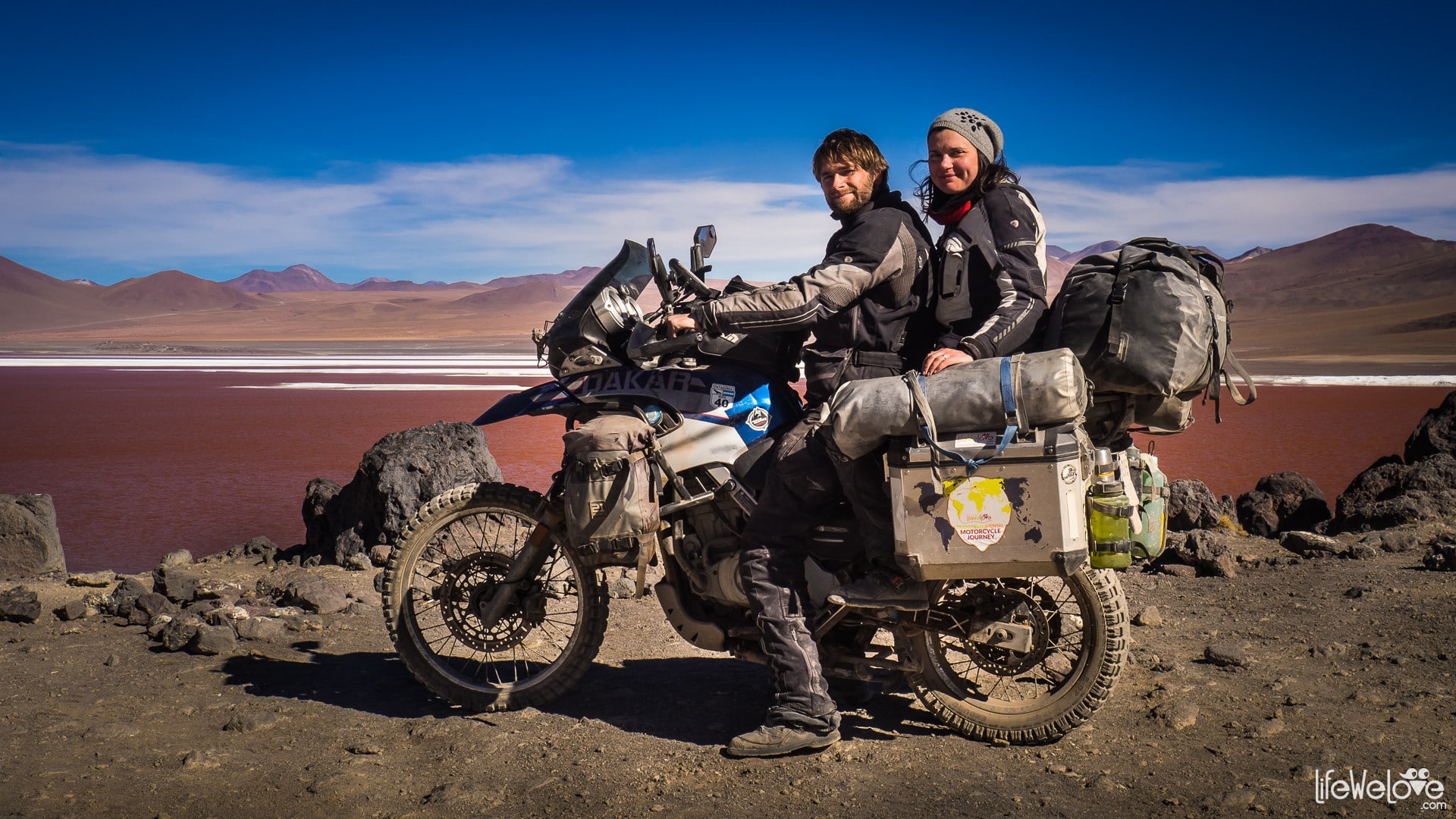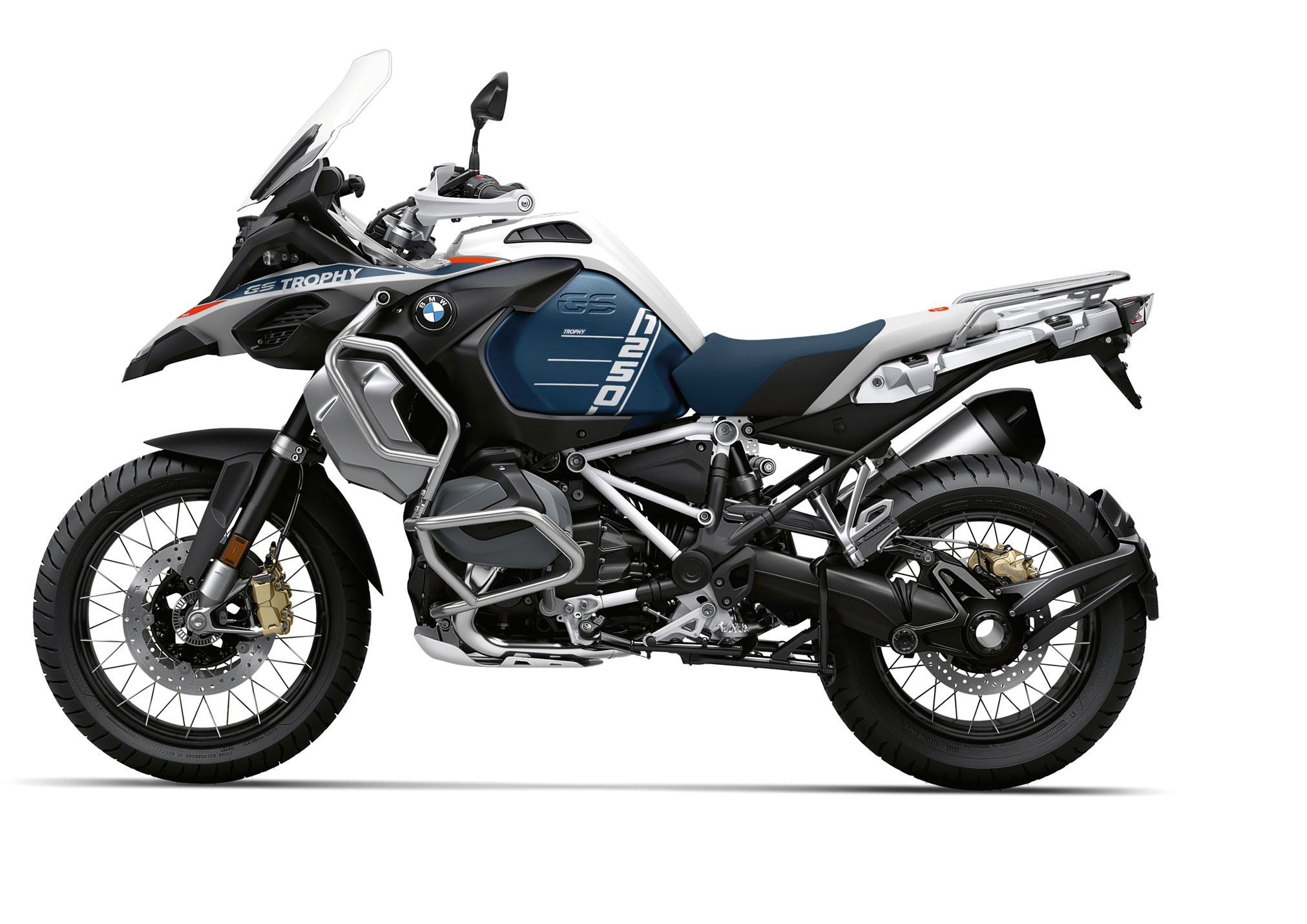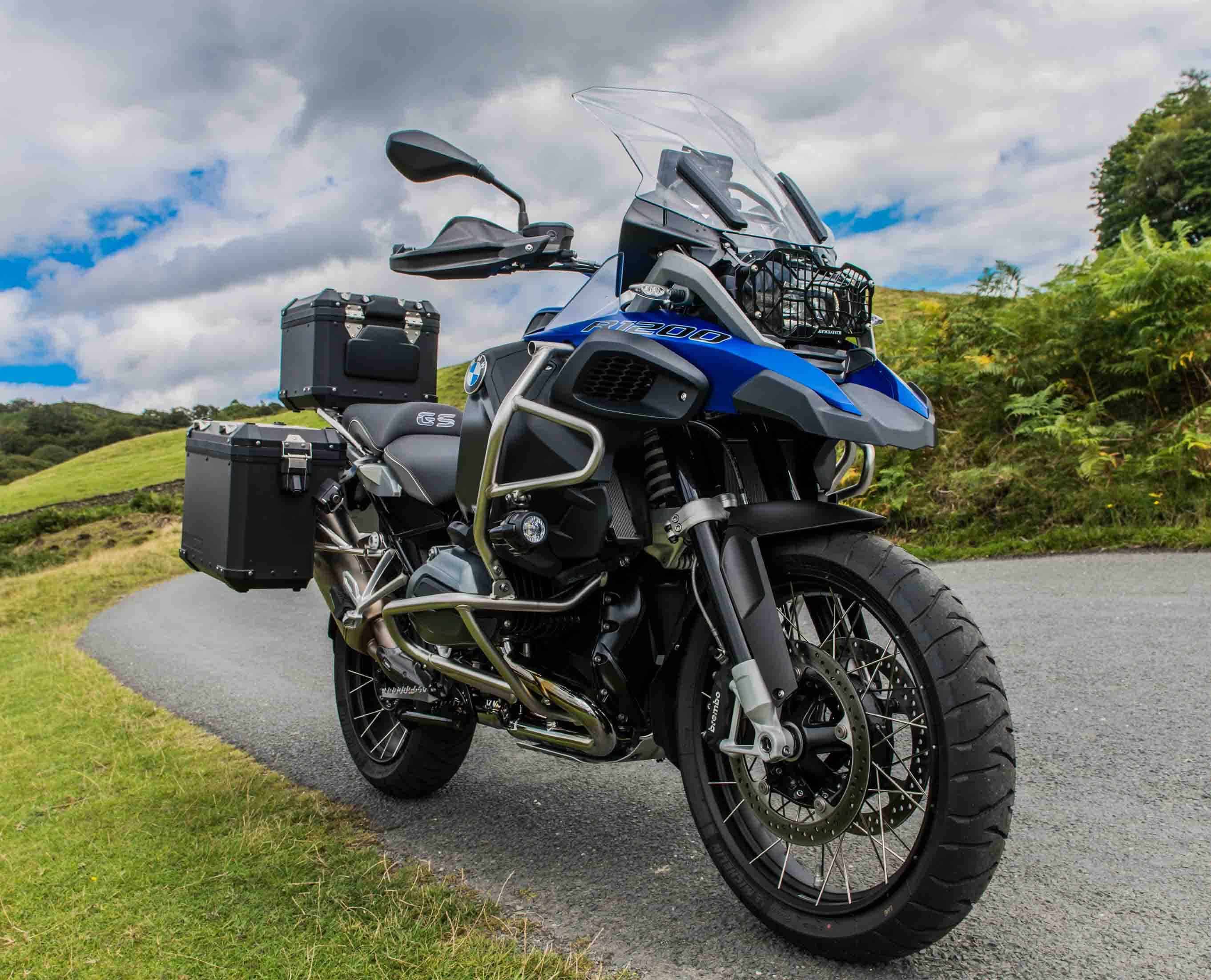What is an ADV bike? This question often arises among motorcycle enthusiasts, particularly those seeking a machine that can conquer both asphalt and dirt. Adventure bikes, also known as dual-purpose motorcycles, are designed to handle diverse terrains and provide a comfortable and capable ride for long-distance journeys. These versatile machines are a fusion of sportbike agility and off-road prowess, offering a unique blend of performance and practicality.
Adventure bikes stand out with their high-capacity fuel tanks, long-travel suspension, rugged tires, and protective bodywork. They are often equipped with luggage racks and panniers, making them ideal for carrying gear and supplies for extended expeditions. While they share some similarities with dual-sport bikes, adventure bikes typically feature larger engines, more sophisticated suspension systems, and a greater focus on rider comfort.
Defining Adventure Bikes
Adventure bikes are motorcycles designed for both on-road and off-road riding, embodying the spirit of exploration and travel. They are built to handle diverse terrains, from paved highways to rugged trails, allowing riders to venture beyond the ordinary and discover new horizons.
Distinctive Features of Adventure Bikes
Adventure bikes are distinguished by their unique blend of features that cater to their dual-purpose nature. Here are some key characteristics that set them apart from other motorcycle types:
- Engine Size and Power: Adventure bikes typically feature powerful engines, ranging from 650cc to 1200cc, providing ample torque for off-road riding and sufficient power for highway cruising.
- Suspension: Adventure bikes are equipped with long-travel suspension systems, designed to absorb bumps and shocks encountered on rough terrain. This ensures a comfortable ride on both paved and unpaved roads.
- Tires: Adventure bikes often come with knobby tires, providing excellent grip on loose surfaces like dirt and gravel. These tires also offer good traction on paved roads, although they may generate more noise and wear faster.
- Ergonomics: Adventure bikes prioritize comfort and rider control. They typically feature upright riding positions, wide handlebars, and adjustable windshields, allowing for long-distance riding without fatigue.
- Fuel Capacity: Adventure bikes boast large fuel tanks, often exceeding 5 gallons, enabling extended range and minimizing the need for frequent refueling on long trips.
- Luggage Capacity: Adventure bikes are designed to carry luggage, with mounting points for panniers, top cases, and other accessories. This allows riders to pack everything they need for extended adventures.
Evolution of Adventure Bikes
The concept of adventure bikes emerged in the 1980s, with the rise of dual-sport motorcycles that could handle both on-road and off-road riding. These early models were often based on motocross bikes, with modifications like larger fuel tanks and street-legal lights.In the 1990s, manufacturers began developing dedicated adventure bikes, combining the off-road capabilities of dual-sport bikes with the comfort and performance of touring motorcycles.
Examples include the Honda Africa Twin and the BMW R1100GS.The 2000s saw a significant increase in the popularity of adventure bikes, driven by factors such as the rise of adventure travel and the growing demand for motorcycles that could handle diverse riding conditions. Today, adventure bikes are a major segment of the motorcycle market, with a wide range of models available from various manufacturers.
Types of Adventure Bikes
Adventure bikes, also known as dual-sport or travel enduro motorcycles, are designed for long-distance riding on both paved and unpaved roads. These versatile machines combine the comfort of touring motorcycles with the off-road capabilities of dirt bikes, making them ideal for exploring diverse landscapes. Adventure bikes cater to a wide range of riders, from seasoned adventurers to weekend warriors, and their popularity continues to grow.
Adventure Bike Subcategories
Adventure bikes can be broadly categorized into three main subcategories:
- Lightweight Adventure Bikes: These bikes prioritize agility and off-road performance, typically featuring smaller engine displacements and lighter weight. They are ideal for tackling challenging terrain and technical trails, making them popular among off-road enthusiasts and experienced riders.
- Mid-Weight Adventure Bikes: These bikes strike a balance between off-road capability and on-road comfort. They feature larger engine displacements and more sophisticated suspension systems, offering a more comfortable ride on both paved and unpaved roads. These bikes are suitable for a wider range of riders, from beginners to experienced adventurers.
- Heavyweight Adventure Bikes: These bikes prioritize comfort and touring capabilities, typically featuring large engine displacements and luxurious features. They are ideal for long-distance touring and comfortable highway cruising, often equipped with large fuel tanks, windshields, and luggage systems. These bikes are popular among experienced riders seeking long-distance comfort and adventure.
Adventure Bike Components
Adventure bikes are meticulously engineered with components that prioritize both off-road prowess and rider comfort. These components work in harmony to enable riders to tackle challenging terrains while enjoying a comfortable and enjoyable ride.
Suspension Systems
The suspension system plays a crucial role in an adventure bike’s ability to handle rough terrain. Adventure bikes are equipped with long-travel suspension systems that provide excellent ground clearance and bump absorption. These systems typically feature adjustable components, allowing riders to fine-tune the suspension settings based on their weight, riding style, and terrain conditions.
The front suspension usually consists of a telescopic fork with adjustable preload, compression, and rebound damping.
The rear suspension is often a monoshock unit, which provides a more responsive and efficient ride than a traditional swingarm.
Tires
Adventure bike tires are designed to offer a balance between on-road performance and off-road traction. They feature a knobby tread pattern that provides grip on loose surfaces like dirt, gravel, and sand, while also offering adequate grip on paved roads.
Adventure bike tires typically have a larger diameter and a wider profile than standard motorcycle tires, which provides a larger contact patch for improved stability and traction.
Some adventure bikes come equipped with tubeless tires, which are more puncture-resistant and can be repaired in the field without the need for a tube.
Luggage Systems
Adventure bikes are designed for long-distance travel, and a robust luggage system is essential for carrying gear and supplies. Adventure bikes often come standard with mounting points for hard or soft luggage, allowing riders to customize their luggage configuration based on their needs.
Hard luggage systems provide maximum security and weather resistance, while soft luggage systems offer flexibility and a lower weight.
Panniers, top cases, and tank bags are common luggage options for adventure bikes, providing ample storage space for everything from camping gear to everyday essentials.
Ergonomics and Rider Comfort
Adventure bikes prioritize rider comfort, recognizing that long-distance rides can be physically demanding. The design of an adventure bike’s seat, handlebars, and wind protection contributes significantly to rider comfort.
Adventure bike seats are typically designed to be wide and comfortable, with ample padding to provide support for long rides.
Adventure bikes feature handlebars that are raised and swept back, providing a more upright riding position that reduces fatigue and improves control.
Wind protection is crucial for long-distance comfort, and adventure bikes often feature adjustable windshields that can be tailored to the rider’s height and preferences.
Riding an Adventure Bike: What Is An Adv Bike

Adventure bikes, with their blend of on- and off-road capabilities, offer a unique and exhilarating riding experience. Whether you’re exploring paved highways or venturing into uncharted trails, these versatile machines provide a sense of freedom and a chance to connect with the open road.
Riding Techniques and Considerations
Adventure bikes, designed for both paved and unpaved roads, require specific riding techniques and considerations to maximize performance and safety.
Paved Roads
On paved roads, adventure bikes generally handle well, offering a comfortable and stable ride. However, their larger size and weight compared to sport bikes might require a slightly different approach.
- Leaning into Turns: While leaning into turns, maintain a smooth and controlled input, remembering the bike’s weight and higher center of gravity. Avoid abrupt movements or excessive lean angles.
- Braking: Use the front brake judiciously, as the additional weight can cause the front wheel to lock up easily. Utilize the rear brake for more gradual braking, especially on slippery surfaces.
- Wind Buffeting: Adventure bikes, with their upright riding position and larger windshields, can experience significant wind buffeting at higher speeds. Be prepared for this force and adjust your grip accordingly.
Unpaved Roads
When venturing off-road, the adventure bike’s capabilities shine. However, navigating unpaved surfaces demands specific skills and adjustments.
- Standing Up: Standing up on the footpegs provides better control and allows you to absorb bumps more effectively. Shift your weight to the outside of the bike when cornering.
- Throttle Control: Maintaining a consistent throttle input is crucial for navigating uneven terrain. Avoid sudden acceleration or deceleration, which can disrupt the bike’s balance.
- Braking: Utilize the rear brake predominantly for braking on loose surfaces. Avoid using the front brake aggressively, as it can cause the front wheel to lose traction.
- Line Selection: Choose a smooth and predictable line, avoiding obstacles and loose surfaces. Be aware of your surroundings and anticipate potential hazards.
Adventure Bike Maintenance

Adventure bikes, built for pushing boundaries and conquering challenging terrains, demand a different approach to maintenance compared to your everyday commuter. The rigors of off-road riding, with its dust, mud, and constant vibrations, can take a toll on your bike’s components, requiring more frequent attention and specific care to keep it performing at its peak.
Regular Servicing
Regular servicing is the cornerstone of keeping your adventure bike in top shape. It involves a series of checks and adjustments that ensure your bike remains reliable and safe for your adventures. The frequency of servicing can vary depending on your riding conditions and mileage, but generally, it’s recommended to have your bike serviced every 5,000 to 10,000 kilometers. This includes:
- Oil Change: Engine oil lubricates moving parts, reducing friction and wear. Off-road riding can accelerate oil degradation due to dust and dirt contamination, making regular oil changes essential.
- Tire Pressure Check: Tire pressure plays a critical role in handling and traction. Maintaining the correct tire pressure is essential for off-road riding, as underinflation can lead to punctures, while overinflation can compromise grip.
- Chain Lubrication: The chain is a crucial component in transferring power from the engine to the rear wheel. Off-road conditions expose the chain to dust, mud, and water, which can cause excessive wear and tear. Regular chain lubrication with a high-quality chain lube is essential for smooth operation and longevity.
- Brake Inspection: Adventure bikes rely on powerful brakes for safe descents and challenging terrain. Regular brake inspection ensures that the pads are in good condition, the rotors are free of debris, and the hydraulic system is functioning correctly.
Addressing Potential Issues, What is an adv bike
Off-road riding can throw unexpected challenges your way, and being prepared for potential issues is crucial for a successful adventure.
Flat Tires
Flat tires are a common occurrence in off-road riding, especially when navigating rocky trails or encountering sharp objects. Carrying a spare tire, a tire repair kit, and a pump is essential.
Always remember to check your tire pressure before setting out on a ride, and inspect your tires for any damage or signs of wear.
Chain Breakage
Chain breakage can happen unexpectedly, leaving you stranded. Carrying a spare chain link and a chain tool allows you to quickly repair a broken chain.
It’s a good idea to practice replacing a chain link before heading out on a long ride, ensuring you are familiar with the process.
Engine Problems
Engine problems can be more complex to address, but regular maintenance can help prevent them.
If you experience any unusual noises or engine performance issues, it’s crucial to stop and diagnose the problem before continuing.
Adventure Bike Accessories
Adventure bikes are designed for long-distance travel and off-road exploration, and they can be customized with a wide range of accessories to enhance comfort, safety, and functionality. These accessories can transform your bike into a true adventure machine, allowing you to tackle any terrain and conquer any challenge.
Adventure Bike Accessories
Adventure bike accessories can be broadly categorized into several groups, each designed to enhance specific aspects of your riding experience. These accessories are essential for enhancing your comfort, safety, and functionality on the road and off-road.
| Accessory Name | Function | Advantages | Disadvantages |
|---|---|---|---|
| Panniers | Carry luggage and gear | Durable, waterproof, and secure | Can be heavy and bulky, affecting handling |
| Top Case | Carry additional luggage and gear | Convenient access, often waterproof | Can limit rear visibility, affect handling |
| Saddlebags | Carry smaller items like tools and essentials | Compact and lightweight, easy to access | Limited storage capacity, may not be waterproof |
| Handguards | Protect hands from wind, rain, and debris | Improved comfort and safety, reduce fatigue | Can interfere with mirror visibility |
| Engine Guards | Protect the engine from damage in case of a crash | Increased protection and peace of mind | Can add weight and affect ground clearance |
| Crash Bars | Protect the bike’s frame and bodywork in case of a crash | Increased protection and peace of mind | Can add weight and affect ground clearance |
| Skid Plate | Protect the underside of the bike from damage | Increased protection and peace of mind | Can add weight and affect ground clearance |
| Windshield | Reduce wind blast and improve comfort | Increased comfort and reduced fatigue, improved aerodynamics | Can affect visibility at low speeds |
| Heated Grips | Provide warmth for hands in cold weather | Increased comfort and safety in cold weather | Can increase battery drain |
| GPS Navigation System | Provide directions and route guidance | Improved navigation and safety, explore new routes | Can be expensive, require a subscription |
| Action Camera | Record your adventures and share your experiences | Capture stunning footage, document your journey | Can be bulky and affect handling |
| LED Lights | Improve visibility and safety at night | Increased visibility and safety, enhance night riding | Can be expensive, require additional wiring |
Adventure Bike Community

The adventure bike community is a vibrant and welcoming group of passionate riders who share a love for exploring the world on two wheels. This community plays a vital role in fostering a sense of camaraderie, sharing experiences, and providing invaluable support to fellow riders.
Online Forums and Social Media Groups
Online forums and social media groups are essential hubs for connecting with fellow adventure bikers. These platforms serve as virtual meeting places where riders can share their experiences, ask questions, and seek advice from others.
- Adventure Rider (advrider.com): This popular forum is a treasure trove of information and discussions covering all aspects of adventure biking, from trip planning and gear reviews to technical advice and travel stories.
- Facebook Groups: Numerous Facebook groups cater specifically to adventure bike enthusiasts, offering a platform for sharing photos, videos, and updates about upcoming rides and events.
- Instagram: Instagram has become a popular platform for adventure bikers to showcase their journeys and connect with others who share their passion.
Adventure Bike Events
Adventure bike events provide an opportunity for riders to meet in person, share their experiences, and ride together. These events range from small gatherings to large-scale rallies, offering a variety of activities, including:
- Group Rides: Organized group rides allow riders to explore new destinations and enjoy the company of others.
- Rallies: Large-scale rallies bring together hundreds of adventure bikers for a weekend of riding, camping, and socializing.
- Workshops and Clinics: These events offer opportunities to learn new skills, such as motorcycle maintenance, navigation, and off-road riding techniques.
Benefits of Joining the Community
Joining the adventure bike community offers numerous benefits, including:
- Access to Resources: The community provides a wealth of information, from trip planning tips and gear recommendations to technical advice and troubleshooting solutions.
- Riding Partners: Finding riding partners can enhance the adventure biking experience, providing companionship, safety, and shared memories.
- Travel Inspiration: Exposure to other riders’ journeys can inspire new adventures and destinations, broadening horizons and encouraging exploration.
- Support and Camaraderie: The community offers a sense of belonging and support, creating a network of like-minded individuals who share a passion for adventure biking.
The world of adventure bikes offers a diverse range of options to suit every rider’s needs and preferences. Whether you’re seeking thrilling off-road adventures or comfortable long-distance touring, there’s an ADV bike that can help you explore the world in style and comfort. As you delve deeper into the world of adventure bikes, consider your riding style, budget, and intended use to find the perfect machine that will empower you to embrace the open road and conquer any terrain.
FAQ Insights
What are the advantages of riding an ADV bike?
Adventure bikes offer a unique blend of advantages, including versatility for both on-road and off-road riding, comfortable long-distance touring capabilities, and the ability to carry gear and supplies for extended trips.
What are the disadvantages of riding an ADV bike?
While ADV bikes offer numerous advantages, they can be heavier and less agile than sportbikes, and their off-road performance may not match dedicated dirt bikes. Additionally, they tend to be more expensive than other motorcycle types.
Are ADV bikes suitable for beginners?
While ADV bikes can be enjoyable for beginners, it’s essential to have some riding experience before venturing off-road. Consider starting with a smaller, lighter dual-sport bike and gradually progressing to an ADV bike as your skills develop.
What are some popular ADV bike brands?
Some popular ADV bike brands include BMW, Honda, KTM, Suzuki, Yamaha, and Triumph, each offering a diverse range of models to suit different rider preferences and budgets.